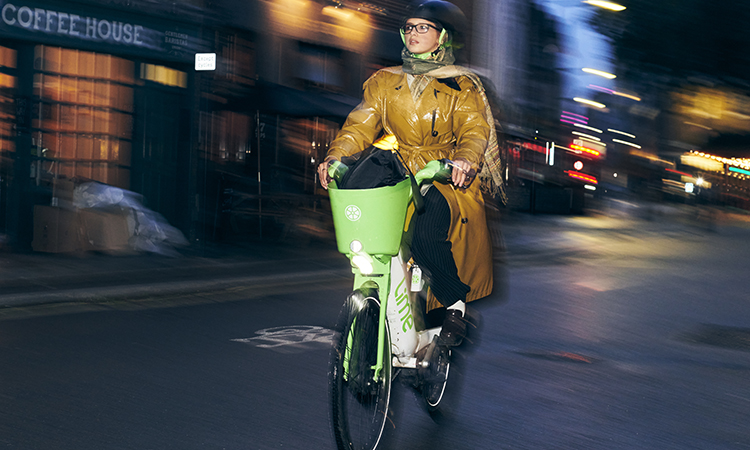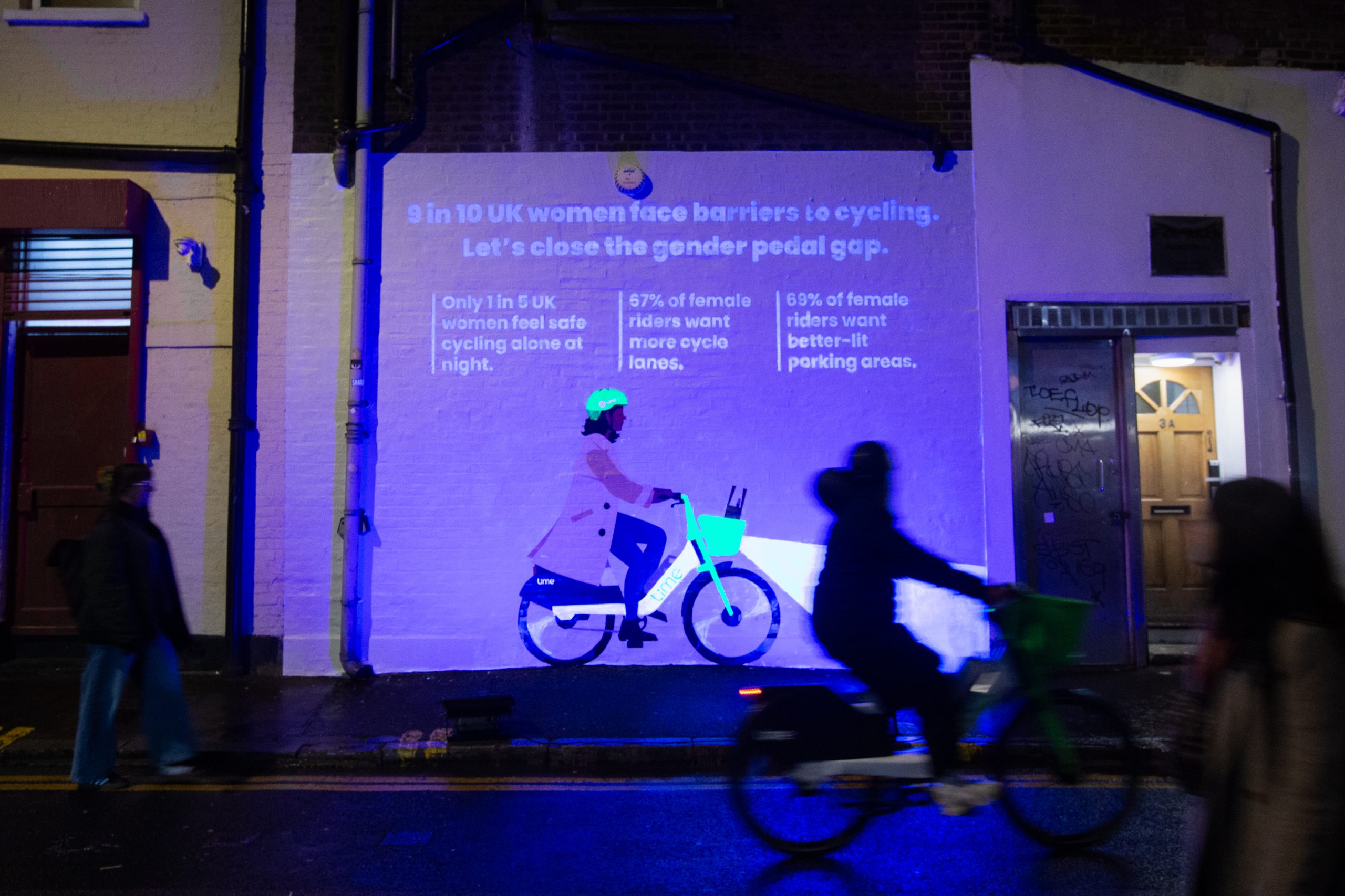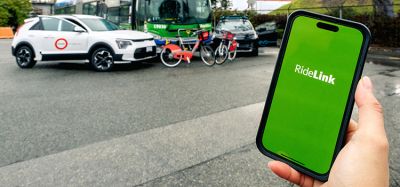New study from Lime highlights gender ‘pedal gap’ in UK
- Like
- Digg
- Del
- Tumblr
- VKontakte
- Buffer
- Love This
- Odnoklassniki
- Meneame
- Blogger
- Amazon
- Yahoo Mail
- Gmail
- AOL
- Newsvine
- HackerNews
- Evernote
- MySpace
- Mail.ru
- Viadeo
- Line
- Comments
- Yummly
- SMS
- Viber
- Telegram
- Subscribe
- Skype
- Facebook Messenger
- Kakao
- LiveJournal
- Yammer
- Edgar
- Fintel
- Mix
- Instapaper
- Copy Link
Posted: 5 December 2023 | Intelligent Transport | No comments yet
With its new report highlighting that just one in five UK women feel safe cycling alone at night, Lime has drawn attention to the barriers to cycling for women and have outlined five key recommendations to improve conditions.


Credit: Lime/ Dominic Marley
A new study from micro-mobility operator Lime has found that nine in 10 (91%) women face barriers to cycling in the UK. The data revealed a significant gender ‘pedal gap’, with women in the UK cycling almost half as much as men every month as a result.
Just one in five (19%) UK women feel safe cycling alone at night, according to Lime’s new ‘Tackling the Gender Pedal Gap’ report, which unveils the barriers to cycling for women; in particular, when alone at night and regarding their feelings of personal safety. Four times as many women said that they view personal cars as a safer transport option than cycling when travelling at night alone (82%), suggesting that they are deterred from choosing a more sustainable transport option after dark.
Poorly lit roads (46%), isolated cycle routes in quiet areas (41%), antisocial behaviour (36%) and fear of harassment from other road users (34%) were uncovered as the main deterrents for female cyclists at night. More generally, when it comes to cycling, almost double the amount of women (27%) cite a lack of experience or confidence as a reason not to cycle compared to men (14%). Lime rider data currently shows that approximately just over a quarter of its users identify as female.
The report – launched with the help of TV personality and London cyclist, Angellica Bell – uncovered the numerous demands from women that would help to improve their feelings of personal safety on-street when cycling after dark. Two thirds (67%) said that they would feel safer if there were more dedicated cycle lanes, 69% want better lit parking areas to finish their ride and 62% want more parking areas near their homes or final destination to avoid additional walking in the dark.
To shine a light on these demands from female cyclists, Lime has launched a mural on London street, intentionally choosing a poorly lit location to drive home the point. Illuminated only under UV light at night, the mural reveals the gender pedal gap that women face all over the country in a series of secret messages, and outlines calls for action to improve personal safety on-street for women when cycling.


Credit: Lime/ Jamie Henderson
Women that cycle regularly are more likely to view it as a safe option alone at night
Interestingly, the study found that three in five (60%) female cyclists would consider travelling by bike or scooter at night alone. Of one in five women (19%) that already do choose to cycle at night, many noted the benefits that it offers when travelling alone. Half (50%) found riding a bike the fastest way to travel through poorly lit or quiet areas compared to walking, and a third (33%) believe that it eliminates the long wait times of other transport options, such as taxis or buses. Additionally, when asked, over half of women who cycle (53%) agree that shared e-bikes and e-scooters offer a good alternative at night when public transport is closed, and 67% see it as a cheaper option in comparison to ride-hailing.
Lime also conducted research with its own riders that revealed over triple the number of female Lime users (68%) said that they see Lime e-bikes as a safe transport option when travelling alone at night, compared to the report data (19%). When it comes to personal safety, female Lime riders also have a smaller difference in safety perceptions between cycling and driving. While 86% view personal cars as a safe option, ride-hailing services (68%) are viewed as safe as cycling. It suggests that women who cycle more regularly with services like Lime are more likely to feel comfortable, and therefore view it as a safer transport option on par with other modes at night. The findings, therefore, also demonstrate that it could become a preferred transport option at night if the barriers identified could be overcome.
Alice Pleasant, Public Affairs Manager at Lime, said: “This report identifies substantial barriers that women face when accessing cycling as a transport option, in particular alone at night. Lime believes the need for sustainable transport is universal, which is why we’re shining a light on this gender ‘pedal gap’ with the aim of removing these barriers. We’re calling for solutions in three areas: infrastructure (creating safe spaces for women on our roads at night), integration with public transport (ensuring that women have access to cycling in the areas that they need them at night), and innovation (creating technologies to support this). Our data shows that women who cycle using services like Lime are also more likely to experience benefits of cycling alone at night, compared to the wider female population. This suggests that the more women that we can get into cycling, the more comfortable they will feel and able to use it as a transport option at night.”
The report concludes with five key recommendations to improve conditions for cycling for women:
- Government and local authorities should build upon existing work with businesses and active travel groups to design and deliver more cycling infrastructure and dedicated parking bays. This should be particularly focused on integration with public transport – 67% of female riders would feel safer if there were more dedicated cycle lanes
- Local authorities should ensure that there is street lighting on popular cycling routes and above parking bays. Operators such as Lime can provide data on popular routes to support this effort – nearly half of women (46%) highlighted poorly lit roads as a barrier to cycling at night as a barrier to cycling
- Government should work with industry, charities and local authorities to introduce accessible cycling proficiency refreshers in secondary schools – 27% of women cite a lack of experience and confidence as a reason not to cycle
- Transport and geographical mapping applications should introduce a feature to show the most well-lit routes home for cycling and walking to support women getting home at night-time – 66% of female riders would feel safer with a ‘well lit route home’ map feature
- Lime to explore developing new product features such as a ‘Follow My Ride’ feature in the UK, allowing women travelling home at night to share their journey with those important to them to provide greater personal safety – 65% of female riders would feel safer if there were an in-app feature from operators allowing them to share their ride location and progress with close friends and family.
Related topics
Active travel, Infrastructure & Urban Planning, Micro-mobility, Passenger Experience, Vehicle & Passenger Safety
Related modes
Bikes & Scooters
Related cities
London
Related countries
United Kingdom
Related organisations
Lime
Related people
Alice Pleasant, Angellica Bell








